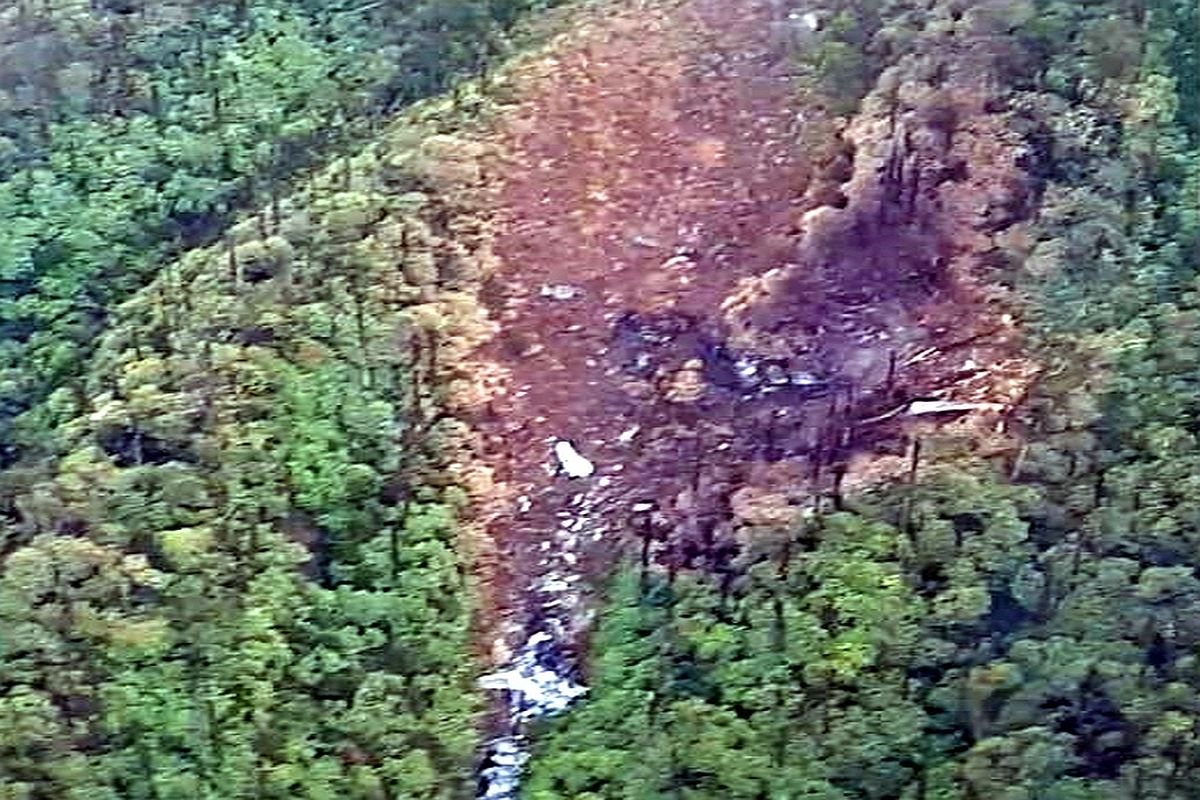LS polls: PM Modi to campaign in Assam, Tripura today
With the Lok Sabha elections inching closer, Prime Minister Narendra Modi is set to campaign for NDA candidates in Assam and Tripura on Wednesday.
Recovering the black boxes will be the next task in trying to piece together what caused the AN-32 to crash.

Visual of the wreckage of the missing AN-32 aircraft. (Photo: IANS)
The relief in the IAF community on Tuesday that the wreckage of the missing AN-32 transport aircraft had been spotted from the air by the crew of a Mi-17 helicopter will translate into a case of fearing the worst, but hoping for the best when a search on the ground is taken up on Wednesday.
Fingers will be hopefully crossed that the weather does not hamper the mission, so that perhaps Thursday’s newspapers will have something positive to report. For spotting the wreckage is only the beginning of huge, taxing, challenge.
Searching for survivors among the 13 on board the flight that took off from Jorhat last Monday afternoon but vanished from radar screens before it could land an expected 90 minutes later at an ALG (advance landing ground) not far from the disputed Line of Actual Control in Arunachal, would be the top priority.
Advertisement
The IAF, however, feels the prospects are bleak. Apart from bad weather and inhospitable terrain, that the area near the wreckage was badly charred points to a “hard landing” that could have taken a toll. Even light helicopters could not touch down near the wreckage on Tuesday, perhaps the weather might permit that a day later, a possible landing site has been identified.
The plans to paradrop the IAFs Garud Commandos will also be weather-influenced. Parties from various agencies moving on foot could take an estimated 24 hours to reach the site after negotiating dense forest, crossing a ridge, and ascending a hill-top at an elevation of 12,000 feet. Still, hope springs eternal…
Recovering the black boxes will be the next task in trying to piece together what caused the AN-32 to crash. Expert investigators are unlikely to be able to make a detailed on-site inspection, even other evidence could have been compromised after a week of rain. The IAF will have to bring all its expertise to bear, perhaps even seek external assistance, to help determine the cause of the crash and thus possibly avoid a recurrence.
Mr Rajnath Singh, still new in South Block, will do well to assure the air force community that no money or effort will come in the way of probing the mishap. The 13 lives that were lost are as precious as that of the celebrated MiG-21 pilot who ejected to safety during a post- Balakot air-action in February. A comprehensive review/upgrade of the radars, landing aids etc at the series of ALGs in the North-east (some of them were re-activated comparatively recently) would also be in order.
It would not be unfair to ask if the three-decades-old AN-32 remains good enough to play the workhorse role in the demanding conditions in the North-east: alas its distance from South Block and Air Headquarters results in a priorityslippage. And revamping the transport section cannot compete with depleting squadron-strength of the combat fleet. To put it bluntly, one Balakot does not an air force make.
Advertisement